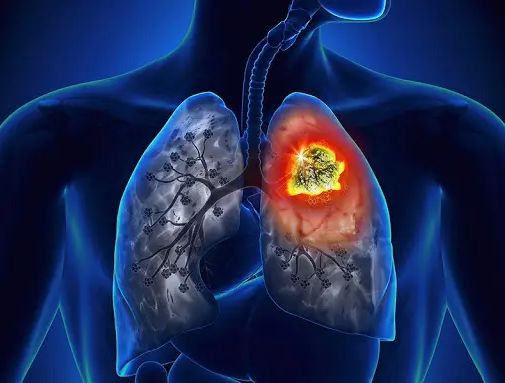January is National Radon Action Month. Radon is an odorless, tasteless, and colorless radioactive gas that is produced in soil and rocks from the degradation of radium, thorium, and uranium. It poses no threat outdoors because the air dilutes radon concentrations. However, in closed areas such as houses or schools, high levels of radon can lead to increased exposure. And while radon itself is not harmful, its degradation products—called “radon daughters”—are radioactive particles that can adhere to any surface, including dust and lung epithelium. Radon can seep into homes and other buildings through cracks in the foundation or drains in floors. It can also enter a house dissolved in well water and then be aerosolized into the air. After smoking, radon is identified as the second-leading cause of lung cancer. And, radon exposure in smokers potentiates the risk of lung cancer. It is estimated that in 2018, radon exposure caused over 21,000 deaths from lung cancer.¹
There are kits available for $10 to $20 that individuals can use to test the radon levels in a house or building.² If radon levels are found to be high, specialized contractors are available to mitigate these levels. Mitigation usually involves increasing ventilation in basements and sealing floors and walls, and it can be expensive, costing over $1,000.² For this reason, many people who find high radon levels are not able to mitigate.
According to the Wisconsin Department of Health Services, up to 1 in 10 homes in Wisconsin have high radon levels. The upper Midwest is an area with higher radon levels. A paper in this issue of the WMJ by Thrasher et al looked at 2 large data sets and interviewed Wisconsin landlords and school administrators to evaluate how many homes and schools have been tested for elevated radon levels.³ They found that about a third of homeowners, landlords, and school districts have tested for elevated radon levels. Of those that found elevated levels, however, only 60% were able to mitigate, citing cost as the biggest barrier.
As health professionals, we have the opportunity to educate patients about the risk of radon exposure, especially in smokers, and encourage people to test the radon levels in their homes. Clinicians also can advocate for all public buildings—especially schools—to be tested for radon and encourage government to pay for mitigation in order to protect against the development of lung cancer. For people who have been exposed, clinicians can discuss whether lung cancer screening is appropriate.⁴
Also in this issue is a paper detailing recommendations that resulted from a unique collaborative effort between the Wisconsin Chapter of the American College of Emergency Physicians and the Wisconsin Psychiatric Association.⁵ With visits to the emergency department for mental health complaints on the rise, these two groups came together to develop a protocol to simplify and expedite the medical evaluation of patients requiring admission to inpatient psychiatric facilities in a way that is patient-centered, safe, and efficient. Endorsed by both organizations, the protocol emphasizes the importance of communication between the emergency physician and the admitting psychiatrist during the clinical encounter and beyond and recommends employing a uniform tool (the Wisconsin SMART Form) in all EDs to guide the medical evaluation of the patient.
REFERENCES
RadonLeaders.org. Reducing the Risk From Radon: A Guide for Health Care Providers. January 25, 2018. http://www.radonleaders.org/sites/default/files/HP_Radon_Guide_2018_FINAL_CRCPD%20E-18-2.pdf. Published January 25, 2018. Accessed December 2, 2019.
Wisconsin Department of Health Services. Radon information for Wisconsin. https://www.dhs.wisconsin.gov/radon/index.htm. Revised November 12, 2019. Accessed December 2, 2019.
Denu RA, Maloney J, Tomasallo CD, Jacobs NM, et al. Survey of Radon Testing and Mitigation by Wisconsin Residents, Landlords, and School Districts. WMJ. 2019;118(4):169-176.
Garcia-Rodriguez JA. Radon gas—the hidden killer: what is the role of family doctors. Can Fam Physician. 2018;64(7):496-501.
Thrasher TW, Rolli M, Redwood RS, et al. “Medical clearance” of patients with acute mental health needs in the emergency department: a literature review and practice recommendations. WMJ. 2019;118(4):156-163.
Article published in Wisconsin Medical Journal (“WMJ”) by Sarina Schrager, MD, MS, WMJ Interim Editor-in-Chief

